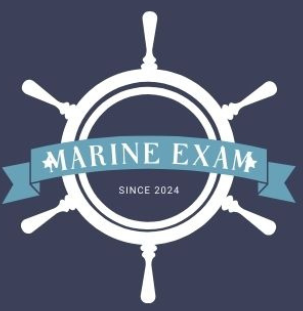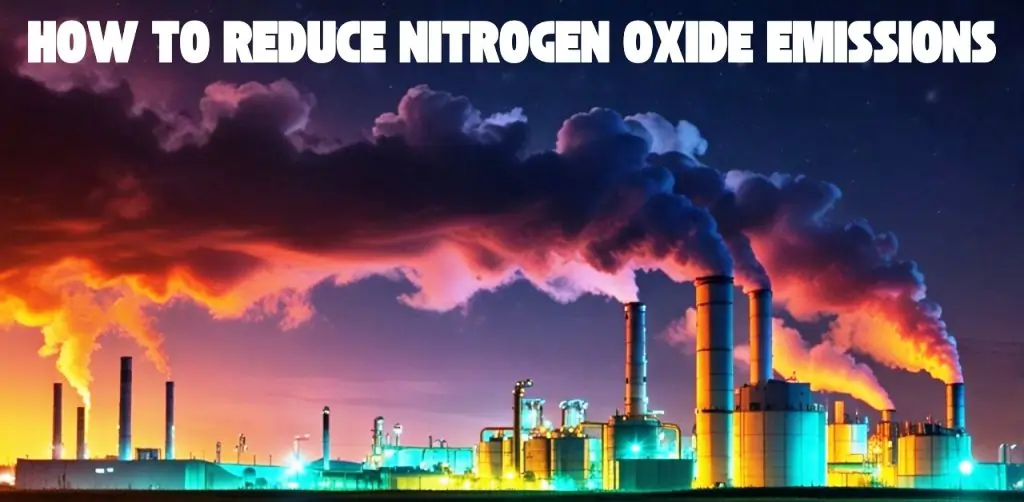How to Reduce Nitrogen Oxide Emissions
Ships are vital to global trade, but they also contribute to air pollution, including harmful nitrogen oxides (NOx) emissions. NOx causes respiratory problems, acid rain, and harms our environment. In this post, we’ll focus on how the marine industry can reduce its NOx footprint. We’ll explore six key strategies: using cleaner fuels, optimizing engine combustion, implementing advanced emission control technologies, promoting sustainable shipping practices, adhering to strict regulations, and fine-tuning ship engines for peak efficiency. By understanding and implementing these strategies, the maritime sector can chart a course towards a cleaner, healthier future for our oceans and our planet.II. Switching to Cleaner Fuels
Ditching the Dirty Fuels: Cleaner Options for Ships
Want to reduce NOx emissions from ships? One of the best ways is to ditch those old, dirty fossil fuels and switch to cleaner options. Here are a few good choices:
Natural Gas: A Cleaner Burn
Natural gas is a much cleaner fuel than the heavy stuff ships usually use (like oil and coal). Switching to natural gas means way fewer NOx emissions, and that’s better for everyone’s lungs and the environment.
Renewable Energy: Power from Nature
Imagine ships powered by the sun, wind, or even water! Renewable energy is still pretty new for ships, but it has huge potential to cut down on pollution.
- Solar panels: Putting solar panels on ships can create electricity, so you don’t have to burn as much fuel.
- Wind power: Using giant sails or windmills can help push the ship or give its engines a boost, saving fuel and reducing those nasty NOx emissions.
- Hydropower: Some ships are even using the power of water to help with things like heating and cooling, which also means less reliance on dirty fuels.
Electric Power: Plugging into Clean Energy
When ships are hanging out in port, they can simply plug into the electricity grid on land. This is called “shore power,” and it means zero emissions while they’re docked!
Even cooler? Electric ships! These ships run on big batteries, kind of like a giant Tesla on the water. They’re perfect for shorter trips and can really help clean up the air around ports and harbors.
By switching to cleaner fuels and using renewable energy, the shipping industry can become much more eco-friendly. That means cleaner air for everyone and a healthier planet for future generations.
Improving Combustion Efficiency: Smoother Sailing, Cleaner Air
In the marine industry, optimizing combustion processes is crucial for minimizing NOx emissions and improving fuel efficiency. Here’s how it’s done:
Ship Engines: Fine-tuning for Optimal Performance
Modern marine diesel engines are complex beasts, but fine-tuning their operation can significantly impact NOx emissions. Here are some key strategies:
- Exhaust Gas Recirculation (EGR): Just like in cars and trucks, EGR systems in ships redirect a portion of the exhaust gas back into the engine. This lowers the peak combustion temperature, reducing NOx formation.
- Optimized Fuel Injection: Precisely controlling the timing and pressure of fuel injection can significantly impact combustion efficiency and NOx emissions. By optimizing these parameters, engineers can achieve a more complete and efficient burn, minimizing NOx production.
- Turbocharger Optimization: The turbocharger plays a crucial role in supplying air to the engine. Fine-tuning the turbocharger settings can optimize the air supply and improve combustion efficiency, leading to lower NOx emissions.
- Engine Tuning: Regular engine tuning and maintenance are essential to ensure optimal combustion and minimize NOx emissions. This includes adjusting valve timing, fuel injection parameters, and other engine settings to achieve the best possible performance.
Advanced Emission Control Technologies: Scrubbing the Skies
Even with optimized engines and cleaner fuels, some NOx emissions are unavoidable. That’s where advanced emission control technologies come in, acting like a final filter to clean up exhaust gases before they reach the atmosphere.
Selective Catalytic Reduction (SCR): A Chemical Cleaning Crew
SCR is a widely used technology that injects a special chemical, usually ammonia, into the exhaust stream. This ammonia reacts with NOx in the presence of a catalyst, converting it into harmless nitrogen and water. Think of it like a tiny chemistry lab inside your ship’s exhaust pipe!
Selective Non-Catalytic Reduction (SNCR): A Simpler Approach
SNCR is similar to SCR but doesn’t use a catalyst. Instead, it relies on high temperatures in the exhaust to break down NOx. While simpler, it’s generally less effective than SCR.
Other Emerging Technologies
The quest for cleaner shipping is driving innovation in emission control technologies. Here are a couple more to keep on your radar:
- Lean NOx Traps (LNT): These systems use special materials to “trap” NOx in the exhaust. The trapped NOx is then periodically released and converted into harmless substances.
- Hybrid Systems: Combining different technologies, like SCR and LNT, can offer even greater NOx reduction.
Regulations: Setting the Course for Cleaner Shipping
Regulations play a crucial role in driving the adoption of cleaner technologies and reducing NOx emissions from ships. Here’s how:
Emission Standards: Raising the Bar
Setting stricter emission limits for ships pushes the industry to adopt cleaner technologies and practices. These standards act as a benchmark, encouraging innovation and investment in emission control solutions.
For example, the International Maritime Organization (IMO) has established progressively stricter NOx emission limits for marine diesel engines through its Tier I, Tier II, and Tier III standards. These regulations have driven the development and implementation of technologies like EGR and SCR to meet the required limits.
Monitoring and Enforcement: Ensuring Compliance
Effective regulations require strong enforcement.. Monitoring ship emissions and enforcing compliance with regulations ensures that the industry adheres to the established standards. This can involve:
- Port State Control: Inspections of ships by port authorities to verify compliance with emission regulations.
- Emission Monitoring Systems: Onboard systems that continuously monitor and record NOx emissions, providing data for compliance verification.
- Penalties and Sanctions: Imposing penalties and sanctions on ships that violate emission regulations, creating a deterrent for non-compliance.
Incentives and Support: Encouraging Green Practices
Governments can also play a role in encouraging the adoption of cleaner technologies by providing incentives and support to the shipping industry. This can include:
- Financial Incentives: Offering subsidies, tax breaks, or grants to support the installation of emission control technologies or the use of cleaner fuels.
- Research and Development Funding: Investing in research and development of new technologies and solutions for NOx reduction in the maritime sector.
- Collaboration and Knowledge Sharing: Facilitating collaboration between industry stakeholders, research institutions, and technology providers to accelerate the development and adoption of cleaner technologies.
Tackling NOx in the Marine World: Unique Challenges and Solutions
Reducing NOx emissions in the marine industry comes with its own set of hurdles. Let’s explore these challenges and the strategies being used to overcome them.
Specific Challenges
- Giant Engines: Ships often have massive diesel engines that produce higher NOx emissions compared to smaller engines.
- Long Lifespans: Ships can operate for decades, making it challenging to retrofit older vessels with the latest emission control technologies.
- Global Operations: Ships travel across international waters, making it crucial to have globally harmonized regulations and enforcement.
Regulations and Compliance
The International Maritime Organization (IMO) has established regulations to limit NOx emissions from ships:
- MARPOL Annex VI: This international treaty sets limits on NOx emissions from marine diesel engines.
- IMO Tier III Standards: These stricter standards apply to ships built after a certain date and operating in designated Emission Control Areas (ECAs).
Technology Adoption
The marine industry is adopting various technologies to reduce NOx emissions:
- Exhaust Gas Recirculation (EGR): Redirecting some exhaust gas back into the engine lowers combustion temperatures and NOx formation.
- Selective Catalytic Reduction (SCR): Using a catalyst and a reductant like ammonia to convert NOx into harmless substances.
- Alternative Fuels: Switching to cleaner fuels like liquefied natural gas (LNG) or methanol can significantly reduce NOx emissions.
Dynamic and Static Tuning of Ship Engines
Proper engine tuning is crucial for optimizing combustion and minimizing NOx emissions.
- Dynamic Tuning: Adjustments made while the engine is running, using sensors and control systems to optimize parameters in real-time based on operating conditions. Examples include:
- Fuel injection timing
- Air-fuel ratio
- Turbocharger boost pressure
- Static Tuning: Adjustments made with the engine off, often during maintenance or overhauls. Examples include:
- Adjusting valve clearances
- Optimizing fuel injector settings
- Cleaning or replacing engine components
Conclusion
To wrap things up, we’ve learned about six key ways to reduce NOx emissions: using cleaner fuels, improving combustion efficiency, implementing advanced emission control technologies, promoting sustainable transportation, regulating industrial processes, and focusing on the marine industry.
It’s going to take a team effort to really make a difference. We need better technology, stricter rules, and everyone doing their part to change how we do things.
The future looks promising, with even cleaner fuels and better ways to control emissions on the horizon. By working together and embracing these advancements, we can create a cleaner, healthier world for everyone.

